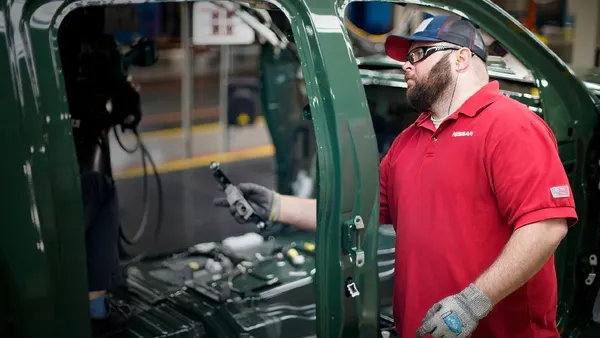Dive Brief:
- John Deere is optimistic that the fundamentals underlying the agriculture economy remain strong, but the company is in limbo gauging demand for replacement equipment until the U.S. and China reveal an outcome of the trade war.
- Investor Communications Manager Brent Norwood said on the company's recent earnings call that Deere expects sales growth in the U.S. and Canada this year could be flat, or it could be up to 5%. The wild card is trade uncertainty.
- On the call, analyst and executives discussed whether the changes to trade flows occurring in response to the changing tides of tariffs may be permanent, even if the trade war subsides. "We've always said, the trade routes will be realigned and the trade flows will readjust and it's going to be bumpy when that happens for a couple of years," CFO Raj Kalathur said.
Dive Insight:
The position of an OEM in the agricultural field is not one that most would envy in the midst of President Trump's trade war with China.
"Even with improved economics on account of the USDA aid, U.S. farmer sentiment remains fluid and continues to erode the longer trade uncertainty [persists]. And while farmers appreciated and benefited from the temporary USDA aid, nearly all prefer a permanent free-market solution," said Investor Communications Manager Brent Norwood.
For Deere, sentiment is everything. Since farming is a relatively unpredictable business in the best of times, Deere's order book a good barometer for the level of optimism in the agricultural industry. An equipment purchase the size of a Deere tractor is an investment in the future of a farm, and uncertainty makes farmers hesitant to invest until the climate improves.
Executives mentioned on the call that in terms of pricing, 2019 is expected to be better than 2018 for Deere's customers growing corn, soy and wheat, but that may not be enough to stoke the confidence to make six-digit purchases beyond what is absolutely necessary.
"While the fundamentals of replacement demand remains intact, the market uncertainty has resulted in some U.S. farmers temporarily pausing equipment investment decisions," said Norwood, who added that many customers have their eyes on the March 1 trade deadline, after which tariffs on $200 billion in Chinese imports may increase form 10% to 25%.














